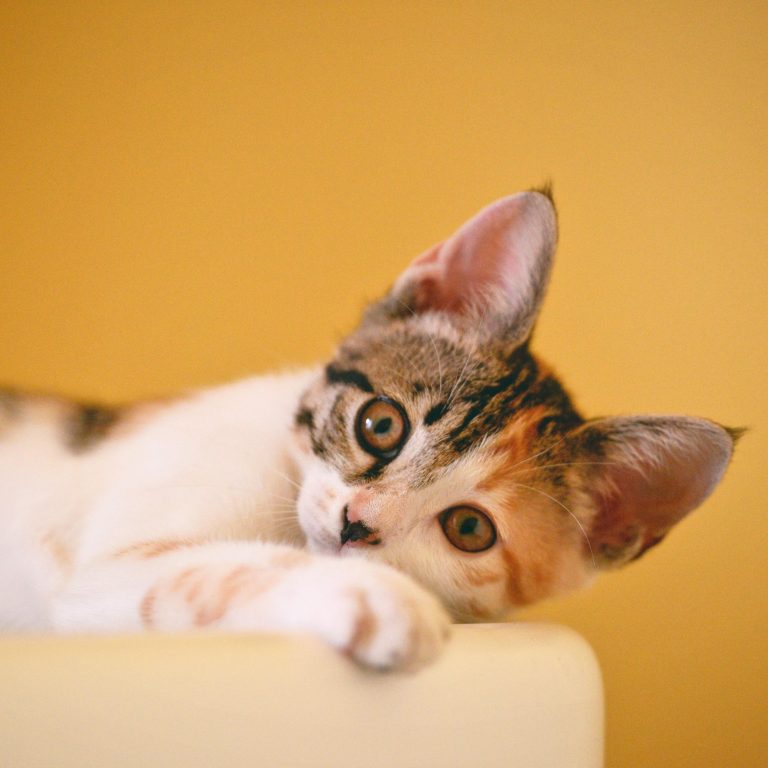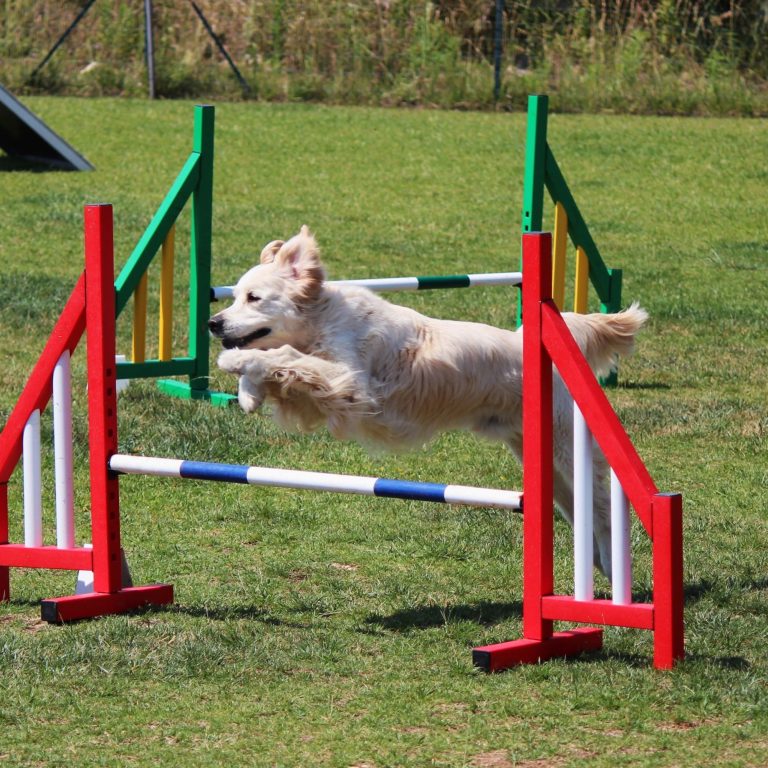Turning Anxieties into Play: Best Toys for Distracting Anxious Cats
Understanding Anxious Cats
If you have a furry friend who experiences anxiety, it’s important to understand the signs and causes of anxiety in cats. By recognizing these signs and understanding the underlying causes, you can provide the support and care your anxious cat needs.
Signs of Anxiety in Cats
Anxiety in cats can manifest in various ways. Some common signs of anxiety include:
- Excessive Hiding: An anxious cat may seek out secluded spots and hide more frequently than usual.
- Avoidance: Cats experiencing anxiety may avoid social interactions, including hiding from their owners or other animals in the household.
- Excessive Grooming: An anxious cat may engage in excessive grooming, leading to hair loss or skin irritation.
- Aggression: Cats may exhibit aggressive behavior when they feel anxious or threatened.
- Changes in Appetite: Anxiety can cause a decrease or increase in appetite, leading to weight loss or weight gain.
- Excessive Vocalization: An anxious cat may meow excessively or vocalize in a distressed manner.
- Litter Box Issues: Anxiety can contribute to litter box problems, such as urinating or defecating outside of the litter box.
It’s important to note that these signs can also indicate other underlying health issues. If you suspect your cat may be anxious, it’s always best to consult with a veterinarian to rule out any potential medical causes.
Causes of Anxiety in Cats
Anxiety in cats can have various causes, and it’s essential to identify the underlying triggers to provide appropriate care. Here are some common causes of anxiety in cats:
- Environmental Changes: Cats are creatures of habit, and any significant changes in their environment, such as moving to a new home or rearranging furniture, can trigger anxiety.
- Lack of Socialization: Cats that have not been properly socialized during their early development stages may be more prone to anxiety.
- Previous Traumatic Experience: Cats that have experienced trauma or abuse in the past may develop anxiety as a result.
- Changes in Routine: Cats thrive on routine, so significant changes in their daily schedule can cause stress and anxiety.
- Loud Noises: Thunderstorms, fireworks, or other loud noises can trigger anxiety in cats.
- Separation Anxiety: Cats that form strong bonds with their owners may experience separation anxiety when left alone for extended periods.
Understanding the signs and causes of anxiety in cats is the first step in providing them with the care and support they need. In the next section, we will explore how play, along with the right toys, can help reduce anxiety in cats. Check out our article on anxiety-reducing toys for cats for more information.
The Importance of Play for Anxious Cats
If you have an anxious cat, incorporating playtime into their daily routine is essential for their overall well-being. Play not only provides physical exercise but also helps to alleviate anxiety and reduce stress. In this section, we will explore how play can help reduce anxiety in cats and provide tips for choosing the right toys for your anxious feline companion.
How Play Can Help Reduce Anxiety
Play serves as a powerful outlet for anxious cats, allowing them to release pent-up energy and engage in natural behaviors. Here are some ways in which play can help reduce anxiety in cats:
- Mental Stimulation: Interactive play sessions engage your cat’s mind, diverting their attention from anxious thoughts and redirecting their focus to the play activity. This mental stimulation can help reduce stress and promote relaxation.
- Physical Exercise: Play provides an opportunity for your cat to exert energy and engage in physical exercise. Regular exercise helps to increase serotonin levels, which can improve your cat’s mood and overall well-being.
- Bonding and Social Interaction: Interactive play sessions create opportunities for you to strengthen the bond with your cat. Spending quality time together can help build trust and confidence, reducing their anxiety over time.
- Outlet for Hunting Behaviors: Play allows your cat to exercise their natural hunting instincts, which can be particularly beneficial for indoor cats. By providing appropriate toys, you can redirect their hunting behaviors away from destructive or anxious behaviors.
Choosing the Right Toys for Anxious Cats
When selecting toys for anxious cats, it’s important to choose ones that promote engagement and provide comfort. Here are some factors to consider when choosing toys for your anxious feline friend:
- Interactive Toys: Look for toys that require your cat’s active participation, such as puzzle toys or treat-dispensing toys. These toys engage their minds and provide a sense of accomplishment, helping to distract them from anxious thoughts.
- Texture and Sensory Appeal: Cats have unique preferences when it comes to textures and sensations. Some may enjoy toys with feathers or crinkling sounds, while others may prefer soft plush toys. Observe your cat’s reactions to different textures and choose toys that resonate with them.
- Variety: Introduce a variety of toys to keep your cat engaged and prevent boredom. Rotate the toys regularly to maintain their interest and ensure they don’t lose novelty.
- Safety: Ensure that the toys you choose are safe for your cat to play with. Avoid toys with small parts that can be easily chewed or swallowed. Regularly check toys for any signs of wear and tear and replace them if necessary.
Remember, every cat is unique, and their preferences may vary. It may take some trial and error to find the toys that best capture your cat’s attention and help reduce their anxiety. By providing a stimulating and engaging play environment, you can help your anxious cat lead a happier and more fulfilled life.
For more information on anxiety-reducing toys for cats, check out our article on anxiety-reducing toys for cats.
Interactive Toys for Anxious Cats
To help alleviate anxiety in cats, interactive toys can be a great way to engage their minds and distract them from their worries. These toys provide mental stimulation, encourage physical activity, and promote positive behaviors. Here are some popular types of interactive toys that can help distract anxious cats:
Puzzle Toys
Puzzle toys are designed to challenge and stimulate a cat’s problem-solving skills. These toys often have hidden compartments or treat-dispensing mechanisms that require the cat to figure out how to access the reward. By engaging in interactive play with puzzle toys, anxious cats can redirect their focus and keep their minds occupied.
Puzzle toys come in various shapes and sizes, and some may have adjustable difficulty levels to cater to different skill levels. It’s important to choose puzzle toys that are specifically designed for cats and made from safe materials. These toys can provide mental stimulation and entertainment, helping to reduce anxiety levels in your furry friend.
Treat-Dispensing Toys
Treat-dispensing toys are an excellent option for engaging anxious cats and providing them with a rewarding experience. These toys are designed to hold treats inside, requiring the cat to manipulate the toy to release the treats. The challenge of obtaining the treats can keep anxious cats engaged and focused on the task at hand.
Treat-dispensing toys come in various shapes and designs, such as balls, puzzles, and interactive feeders. Some toys have adjustable openings to control the difficulty level, allowing you to customize the challenge based on your cat’s abilities. By incorporating treat-dispensing toys into playtime, you can provide mental stimulation and encourage your anxious cat to engage in positive behaviors.
Feather Wands and Fishing Rod Toys
Feather wands and fishing rod toys are interactive toys that mimic the movement of prey, engaging a cat’s natural hunting instincts. These toys typically consist of a wand or rod with a feather or toy attached to a string. By moving the toy in a realistic manner, you can stimulate your cat’s predatory nature and provide an outlet for their energy.
Feather wands and fishing rod toys are a great way to encourage your anxious cat to exercise, as they involve jumping, pouncing, and chasing. These interactive toys can help distract your cat from their anxiety and redirect their focus towards playful and engaging activities. Remember to supervise your cat during playtime to ensure their safety and prevent any potential accidents.
By incorporating interactive toys into playtime, you can help distract and engage your anxious cat in a positive and beneficial way. Remember to choose toys that are safe, durable, and suitable for your cat’s preferences and abilities. Regular play sessions with interactive toys can provide mental stimulation, alleviate anxiety, and strengthen the bond between you and your feline companion. If you’re interested in exploring more anxiety-reducing toys for cats, check out our article on anxiety-reducing toys for cats.
DIY Toys for Anxious Cats
If you’re looking for cost-effective and creative ways to engage your anxious cat, DIY toys can be a great option. These homemade toys not only provide mental stimulation but also help distract and alleviate anxiety in your feline friend. Let’s explore three types of DIY toys that can help ease your cat’s anxiety: homemade puzzle toys, DIY treat-dispensing toys, and DIY interactive wand toys.
Homemade Puzzle Toys
Puzzle toys are an excellent choice for providing mental stimulation and diverting your cat’s attention away from anxiety triggers. Creating homemade puzzle toys can be a fun and rewarding experience. Here are a few ideas to get you started:
| DIY Puzzle Toy Ideas |
|---|
| Treat Ball: Fill a small plastic ball with treats or dry food and cut a few holes in it. Your cat will have to roll the ball around to access the treats. |
| Cardboard Tube Puzzle: Cut cardboard tubes into various lengths and hide treats inside. Fold the ends to create a challenge for your cat to retrieve the treats. |
| Muffin Tin Puzzle: Place treats or toys in the cups of a muffin tin and cover them with tennis balls or crumpled paper. Your cat will have to remove the obstacles to access the rewards. |
DIY Treat-Dispensing Toys
Treat-dispensing toys provide mental stimulation and entertainment for anxious cats. They offer a rewarding experience as your cat works to retrieve treats. Here are a few simple DIY ideas:
| DIY Treat-Dispensing Toy Ideas |
|---|
| Toilet Paper Roll Treat Toy: Fold the ends of a toilet paper roll and place treats inside. Your cat will enjoy batting the roll around to release the treats. |
| Egg Carton Treat Toy: Fill the cups of an egg carton with treats and fold the lid shut. Your cat will have to open the carton to access the treats. |
| Sock Treat Ball: Place treats inside a sock and tie a knot to secure them. Your cat will have to manipulate the sock to release the treats. |
DIY Interactive Wand Toys
Interactive wand toys can provide an outlet for your cat’s natural hunting instincts, helping to reduce anxiety and promote physical activity. Creating your own interactive wand toy is simple and can be tailored to your cat’s preferences. Here are a few ideas:
| DIY Interactive Wand Toy Ideas |
|---|
| Feather Wand: Attach feathers or fabric strips to a string or stick. Move the wand in enticing patterns to engage your cat’s prey drive. |
| Fishing Rod Toy: Tie a small toy or feather to a string and attach it to a stick or dowel. Use the fishing rod toy to mimic the movements of a prey animal. |
| Paper Bag Wand: Attach a crinkled paper bag to a stick or dowel. The sound and movement of the bag will capture your cat’s attention and stimulate play. |
By engaging in DIY toy-making, you can provide your anxious cat with fun and stimulating distractions that promote play and reduce anxiety. Keep in mind that supervision is essential during playtime to ensure your cat’s safety. If you’re interested in exploring other anxiety-reducing toys for cats, check out our article on anxiety-reducing toys for cats.
Playtime Tips for Anxious Cats
When it comes to helping your anxious cat, incorporating playtime into their daily routine can make a significant difference in their overall well-being. By creating a safe and calming environment, establishing a play routine, and monitoring and adjusting playtime, you can provide a positive outlet for your cat’s anxiety.
Creating a Safe and Calming Environment
To create a safe and calming environment for your anxious cat during playtime, consider the following tips:
- Choose a quiet space: Find a quiet room or area in your home where your cat feels comfortable and secure. This will help minimize distractions and create a peaceful environment.
- Provide hiding spots: Set up hiding spots or cozy retreats where your cat can go if they start to feel overwhelmed. This can include cat beds, blankets, or even cardboard boxes. Having a safe space to retreat to can help reduce anxiety during play sessions.
- Use calming pheromones: Consider using pheromone diffusers or sprays that emit calming scents. These can help create a soothing atmosphere for your cat and reduce anxiety. Consult with your veterinarian for recommendations on appropriate products.
Establishing a Play Routine
Establishing a consistent play routine is essential for anxious cats. Here’s how you can create an effective playtime routine:
- Set a regular schedule: Establish a specific time each day for play sessions. Cats thrive on routine, so having a consistent schedule will help them anticipate and look forward to playtime.
- Use interactive toys: Choose interactive toys that stimulate your cat’s natural instincts. Toys like puzzle toys, treat-dispensing toys, and feather wands can engage your cat’s mind and body, providing a beneficial outlet for their anxiety. Check out our article on interactive toys for anxious cats for more ideas.
- Keep play sessions short and frequent: Cats have short attention spans, so aim for multiple shorter play sessions throughout the day rather than one long session. This will prevent your cat from becoming overstimulated and help maintain their interest.
Monitoring and Adjusting Playtime
While playtime is beneficial for anxious cats, it’s important to monitor and adjust the duration and intensity of play sessions based on your cat’s individual needs. Consider the following tips:
- Observe your cat’s behavior: Pay attention to your cat’s body language and behavior during playtime. If you notice signs of stress or agitation, such as flattened ears, a tucked tail, or excessive vocalization, it may be a sign to reduce the intensity or end the play session.
- Gradually increase playtime: Start with shorter play sessions and gradually increase the duration as your cat becomes more comfortable. This will help them build confidence and reduce anxiety over time.
- Rotate toys: To keep playtime engaging, rotate your cat’s toys regularly. This prevents boredom and maintains their interest in play sessions. For a variety of anxiety-reducing toys for cats, check out our article on anxiety-reducing toys for cats.
By following these playtime tips, you can create a positive and enriching experience for your anxious cat. Remember, every cat is unique, so it’s important to pay attention to their individual needs and preferences. With patience and understanding, you can help your cat find joy and relief through play.







